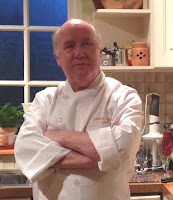Traditional Welsh Cawl

The Recycled Cook By Adrian Sleeman Traditional Welsh Cawl Making leftover food into even tastier dishes is all about using your imagination to its fullest. What better place to start than with a Welsh classic, " C awl ", which in Welsh sim ply means mixture. This is a dish that you will find in rural areas all over the world, wi t h many different names and variations: C aldo, Cazuela, Cock-a-leekie or Ajiaco to name but a few but they all have one thing in common, they are cheap, who lesome, warming and satisfying. http://en.wikipedia.org/wiki/List_of_soup The thing abo ut recycling food is that you need to plan ahead, that way you wa s te little and make far more of the food y ou are cooking. S o what is "Cawl" made from? Ingredients: 2 Litres of Stock ( see below for method ) A whole chicken carcass (you can also use leftover pieces of Beef or Lam b ) Whatever root vegetables you have; Carrots, Swede, Potatoes , P...